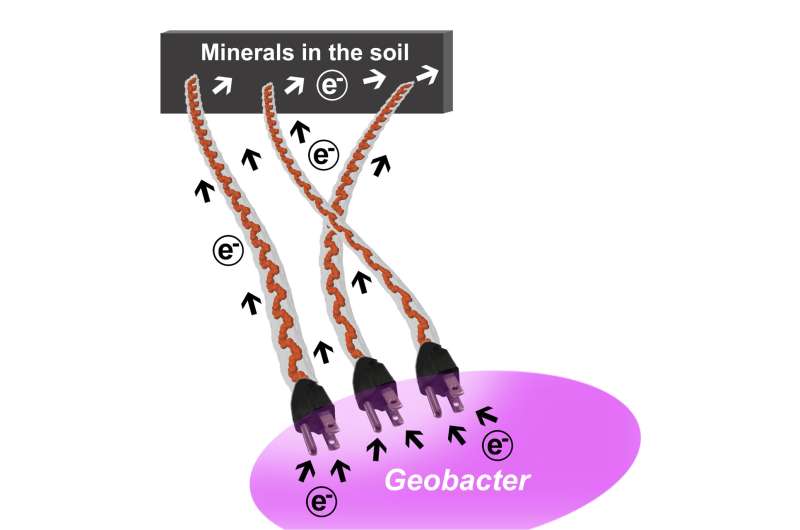This article has been reviewed according to Science X's editorial process and policies. Editors have highlighted the following attributes while ensuring the content's credibility:
fact-checked
peer-reviewed publication
trusted source
proofread
Research suggests natural electrical grid deep inside Earth enables many types of microbes to survive

To "breathe" in an environment without oxygen, bacteria in the ground beneath our feet depend upon a single family of proteins to transfer excess electrons (produced during the "burning" of nutrients) to electric hairs called nanowires projecting from their surface.
This family of proteins, in essence, acts as plugs that power these nanowires to create a natural electrical grid deep inside the Earth, which enables many types of microbes to survive and support life, said co-senior authors of the new study published in the journal Nature Communications
The researchers included Nikhil Malvankar, associate professor of Yale's Molecular Biophysics and Biochemistry Department and Microbial Sciences Institute, and Carlos Salgueiro, full Professor at NOVA School of Science and Technology in Lisbon (NOVA-FCT).
Malvankar's lab and Salgueiro's lab have extensively studied the components of this microbial electrical grid. However, it was unclear how bacteria can transmit excess electrons produced by metabolic activity into nanowires projecting from their surface and connecting with minerals or neighbors. The researcher found that many kinds of soil bacteria depend upon a single, widespread family of cytochromes inside their bodies to charge nanowires.
Understanding the details of this nanowire charging is important for the potential development of new energy sources and new biomaterials and their impact on the environment.
Malvankar and Salgueiro note that microbes absorb 80% of methane in the ocean, a major contributor to global warming, emitted from ocean floors. However, microbes on Earth's surface account for 50% of methane emissions into the atmosphere. Understanding different metabolic processes might help mitigate methane emissions, they said.
More information: Pilar C. Portela et al, Widespread extracellular electron transfer pathways for charging microbial cytochrome OmcS nanowires via periplasmic cytochromes PpcABCDE, Nature Communications (2024). DOI: 10.1038/s41467-024-46192-0
Journal information: Nature Communications
Provided by Yale University





















